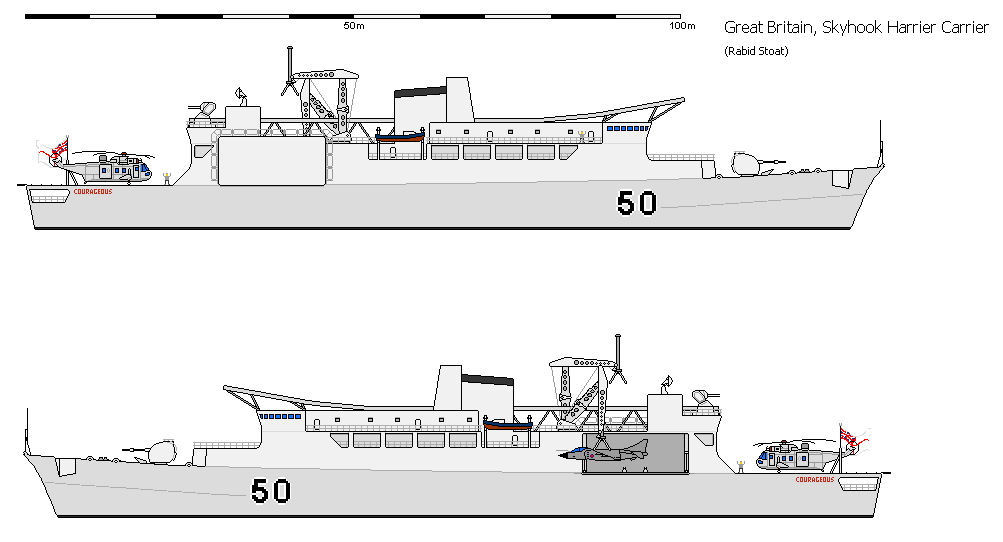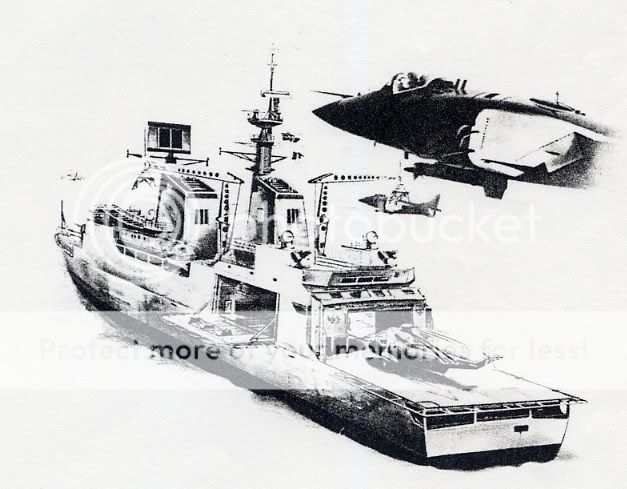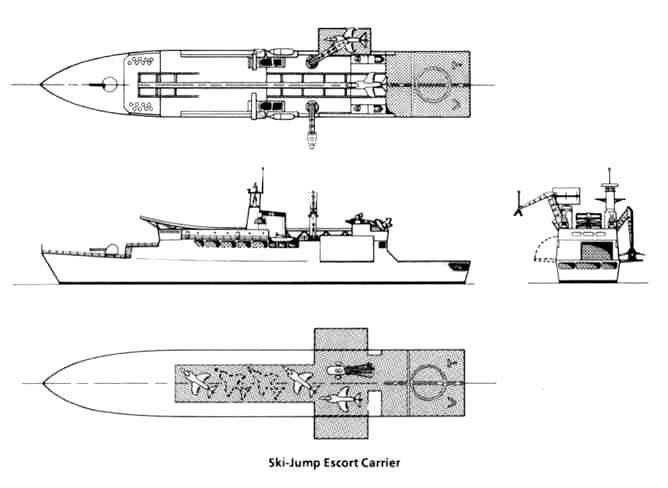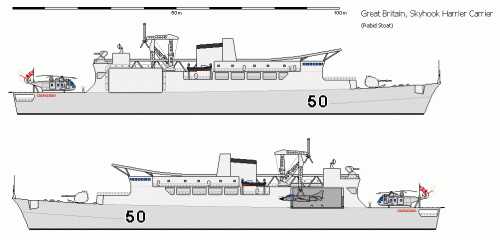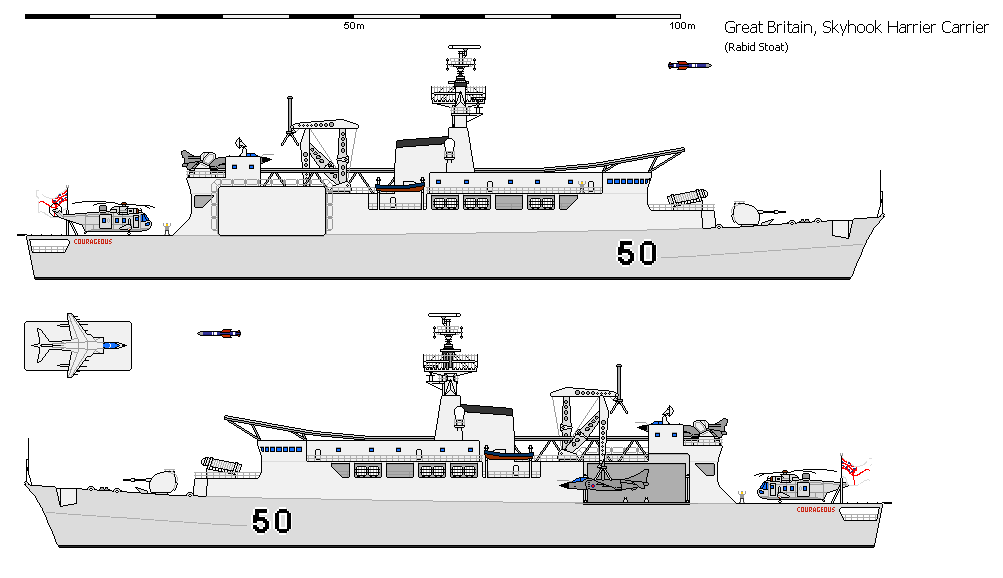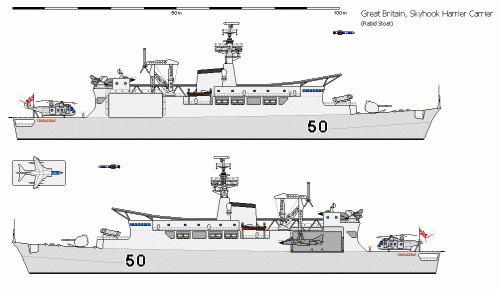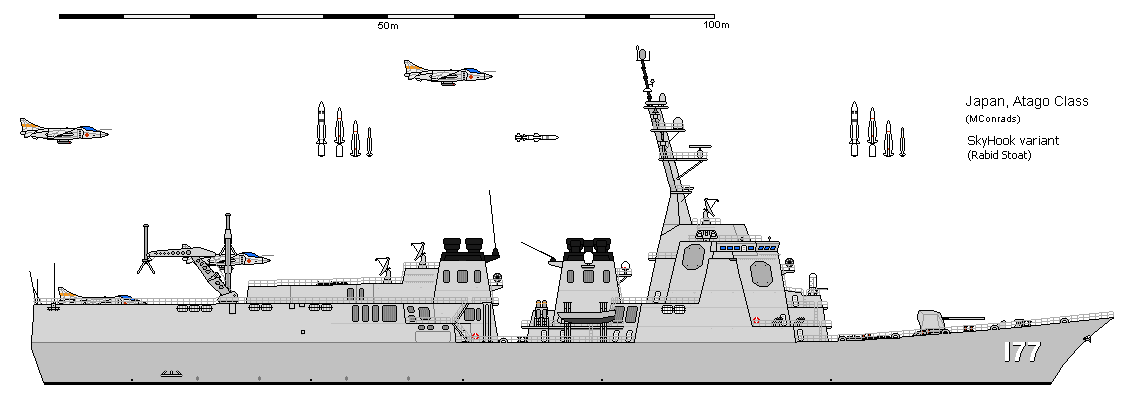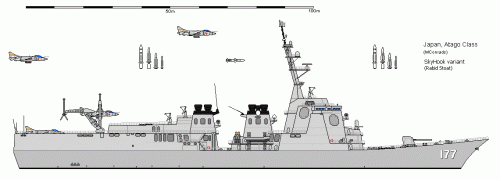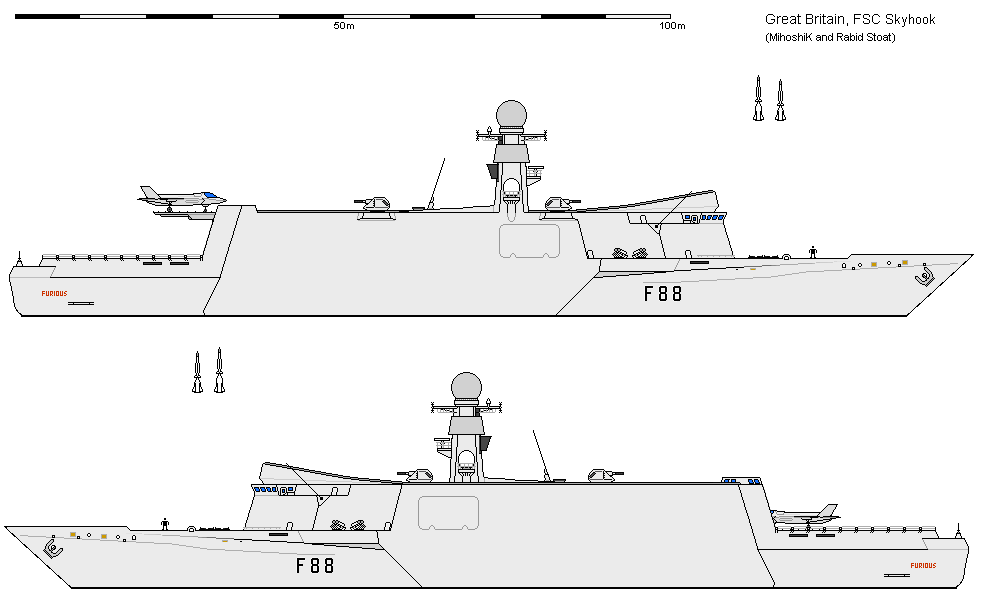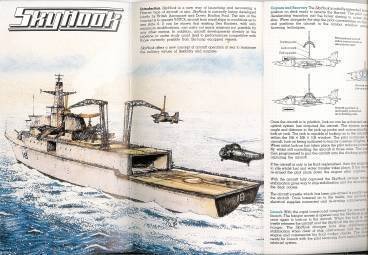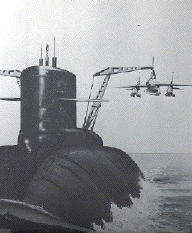Great images Mr Stoat!
See also: http://www.secretprojects.co.uk/forum/index.php/topic,1304.0.html
These small SkyHook ships are analogous to the land-based Harrier's forward bases, allowing dispersed operations and the possibility of basing some aircraft closer to the main threat, without risking the 'main base' (i.e. CVS) unduly. The issue of maintenance 'overheads' is a bit of a red herring - the idea was to use the CVS for major servicing, as with a Harrier main base on land, and to 'circulate' aircraft to the 'forward' SkyHook base. In the Falklands CAP duration was limited until the FOB (HMS Sheathbill) at San Carlos was built. SkyHook allowed the use of small ships that had too much motion in rough seas for conventional deck landings to function as a FOB.
I always thought the VT SkyHook ship was a nice idea, incorporating the skeletal ski-jump (as opposed to BAe's own ship 'designs', or to frigates with 'bolt on Skyhook, without a 'runway' for added STOL payloads) but it does seem to me that it posed the following problems:
- Getting Sea Harrier onto the rails involved swinging them up and over the Sea Dragon CIWS - potential prang, and momentarily added lots of topweight.
- The rails passed between the funnels, limiting wing span for future aircraft.
- The rails and SkyHook were very close to the main radar - potential EM issues, especially for later, FBW aircraft
- The side doors from the hangar look very exposed to spray in rough seas, and therefore damage - the BAe 'design' used a scissor lift inboard, which would have been less wet at least (plus allowed 2 hangar decks).
- The position of the funnels meant that the SkyHooks were both aft of the ship mid-point (adding extra motions to be cancelled out) and rather close to the funnel exhausts when heading into wind.
- Why a 4.5 inch gun? Surely another CIWS or more Sea Wolf missiles forward would make sense in a 'picket ship'. And some stealth would help too when deployed 'up threat' of the main fleet.
I assume that attempts to limit topweight meant some of this 'tight' packing was needed. But to me it seems that a trimamran like VT's later Triton (or Cerberus - see http://defence-data.com/dsei/pageds1001.htm) would have solved many of the problems, giving more beam and therefore space, as well as allowing higher masts to move radars away from aircraft and reducing rolling motions. In addition, the wave piercing hull form and staggered funnels/masts of the VT Sea Wraith (http://defence-data.com/rnbaee/pagern8.htm) could have reduced pitching, so possibly allowing operations in sea states higher than 6, and freed up more top space too. The proposed Type 43 (Brown & Moore book), with the 'landing spot' amidships (and ahead of the funnels in the 'Harrier Carrier' version) also offers some useful features, if expensive/complex.
Hmmm, any Shipbucket takers for a stealthy, trimaran, wave-piercing, Skyhook/skeletal ski-jump mini carrier with a dash of Type 43 added in (with P.1216/F-35B)!?



